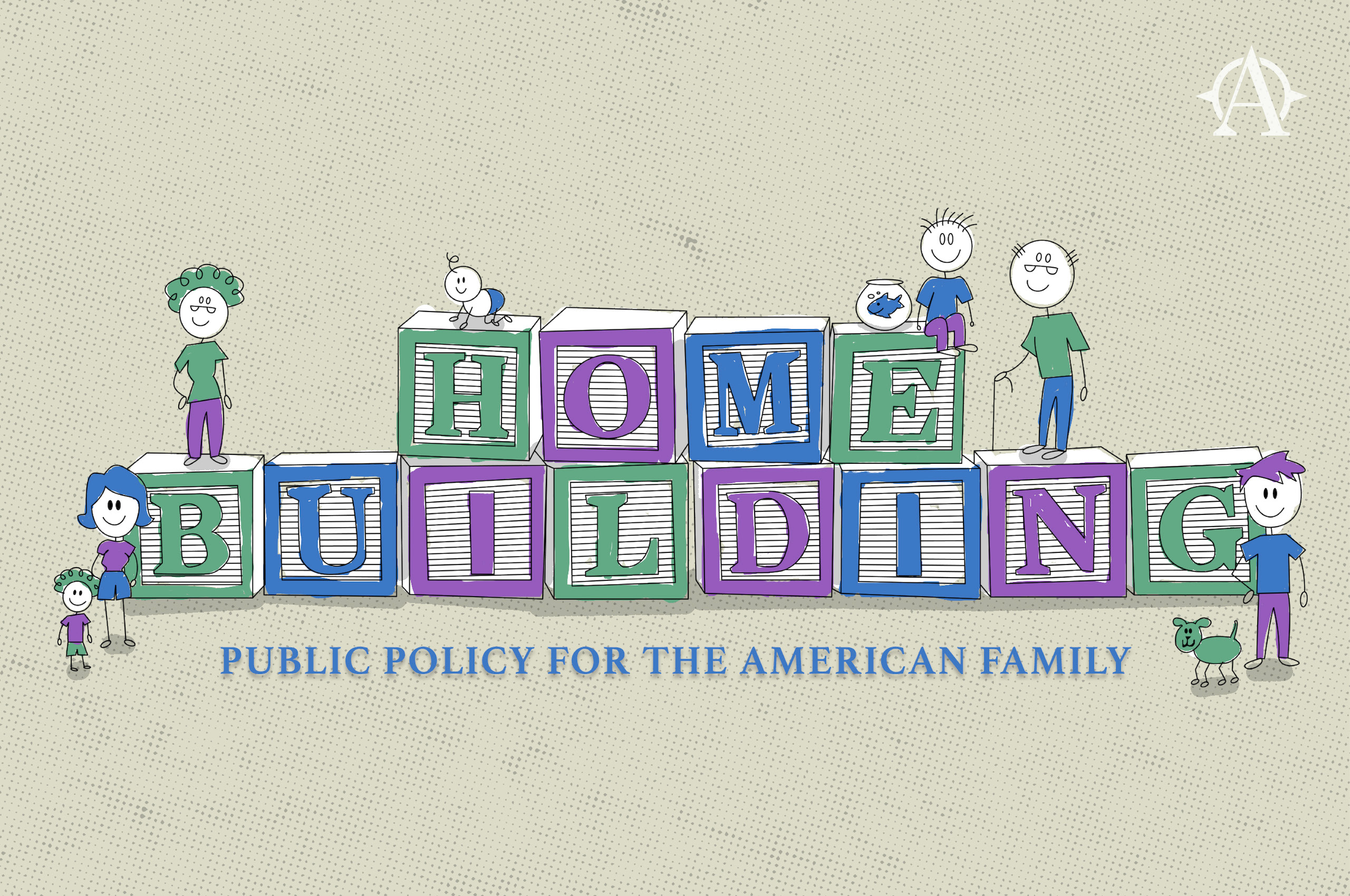
American families report the collapse of middle-class security
RECOMMENDED READING
Executive Summary
American families, across parties and classes, broadly share a definition of the middle class and concern with how the economy has made middle-class life harder. While some economists have argued that economic growth has led to widespread gains in prosperity, Americans reject that view and recognize that trends like rising inequality, stagnating wages, and pressure for a household to have two incomes have all eroded the typical working family’s well-being and made middle-class security more difficult to attain.
Americans recognize a common set of conditions as vitally important to the middle class:
- Affording comprehensive health insurance (86%)
- Owning your own home (74%)
- Being able to support your family on one parent’s income (71%)
- Saving enough to pay for your children to attend college (69%)
Americans recognize that stagnating wages for typical workers, especially young men, are a major obstacle to middle-class prosperity. Among those expressing an opinion:
- 68% agree that rising inequality is a big problem, because some groups of Americans have seen major gains while others have been left behind.
- 74% agree that stagnating wages for young men are a big problem and help to explain why they are leaving the workforce and marriage rates are declining.
- 71% agree that families sending two parents into the workforce to make ends meet is a big problem, because many families have lost the choice they want, and once had, to live a middle-class lifestyle on one income.
A typical worker’s income is no longer sufficient to reduce worries about affording essentials:
- Parents with income of $40-60K are as likely to worry about affording health insurance, a home, a car, nutritious food, or college tuition as parents with income below $20K
- Most Americans say they wouldn’t mind relying on government to provide them with those things
These results reinforce the findings of American Compass’s Cost-of-Thriving Index, which shows how the rising cost of food, housing, health care, transportation, and higher education has swamped the typical male worker’s wage. Whereas in the 1980s, just 40 weeks of wages would cover all those costs, in the 2020s it would take more than 60—a big problem, there being only 52 weeks in the year.
I. Middle Class in America
We began this survey by asking American parents how they defined the middle class: “The definition of ‘middle class’ means different things to different people. How important are each of the following, in your view, to being in the middle class?” They were then offered a range of options from those generally considered in that context, e.g., “owning your own home,” and others that at least some people might consider more superfluous, e.g., “having a flat-screen television.” In each case, they could choose “Essential,” “Important,” “Nice to have,” or “Insignificant.”
Four items stand out as consensus selections, each with more than two-thirds of parents classifying it as “essential” or “important”: affording comprehensive health insurance, owning your own home, saving enough to pay for your children to attend college, and being able to support your family on one parent’s income. A fifth, having smartphones, was also chosen by more than 50% as essential or important. It stands out as an item that would not historically have been considered a middle-class essential, but illustrates how the definition of middle class can evolve and add costs over time.
Other items like annual family vacations, flat-screen televisions, and new cars were generally seen as nice to have.
II. Perspectives on Prosperity
Debates about the economic condition of the American middle class are notable for how little disagreement exists about the data. Straightforward, widely accepted government statistics show that inequality has risen and that men’s wages have stagnated. Few question that families have responded by more frequently having both parents working outside the home, and that government has responded by expanding transfer payments and programs to provide what families would increasingly struggle to pay for themselves.
The debate is about how to interpret these facts. From one perspective, they represent a catastrophe: rising inequality, the inability to support a family on one income, and increased reliance on government all strike at the heart of middle-class prosperity and security. From another, they represent a natural course for the free market. People earn as much or more than they used to, technological progress ensures improved material living standards, and everyone is free to make the choices that they want.
We presented a number of facts to survey respondents and in each case offered them two arguments about how to interpret the fact and asked which argument they agreed with. The results were striking: Americans across parties and classes overwhelmingly agreed with the view that middle-class security has eroded and that this is a big problem. Results were most skewed among those who felt strongly about the issues.
Responses were most evenly split on the question of whether government stepping in to support the middle class represents a “big success” or a “big failure.” Here, a partisan divide emerges, with Democrats generally viewing this outcome as a big success while Republicans view it as a big failure. Notably, those in the working and middle classes, who are the beneficiaries of the expanded government largesse at issue, are most likely to reject the model as a big failure.
III. Appetite for Government
The financial squeeze on working- and middle-class households is also apparent in their sense of financial precarity. Efforts by public programs to relieve that pressures do not appear to be relieving the sense of precarity, even as it establishes an expectation of—and comfort with—reliance on government.
We asked parents “how much do you worry about your family’s ability to afford” good health insurance, a home in a safe neighborhood, a reliable car, college tuition, and nutritious food. Responses varied little between those in households with income below $20,000 per year, between $20,000 and $40,000 per year, and between $40,000 and $60,000 per year. Put another way, households approaching median income report feeling financial pressure comparable to that felt by those mired in poverty. While the survey provides no definitive explanation for this result, one possibility is that financial pressure on the American middle coupled with increasingly generous anti-poverty programs has yielded a situation where the typical job offers little improvement in financial circumstances over reliance on the safety net.
Conversely, but not unrelatedly, the evolution of America’s economy to one in which comprehensive health insurance and college tuition are simply presumed to be out of middle-class reach has led to a situation where Americans expect to rely on government. We asked parents, “Thinking about different expenses for your family, how would you feel about relying on a government program to help you afford them?” For each of “health insurance or health care,” “a home for my family,” “college tuition for my children,” and “nutritious food,” respondents were offered the options of “I would expect to rely on government support,” “I wouldn’t mind relying on government support,” and “I would be embarrassed to rely on government support.”
Half of middle- and upper-class parents say they would be embarrassed to rely on government for food and housing, as do one-third of working-class parents. But when it comes to health care and higher education, at least three-quarters of respondents across classes say they would expect to rely on government support or else wouldn’t mind doing so.
ABOUT THE DATA
The American Compass Family Affordability Survey was conducted by YouGov between January 26 and February 1, 2023, with a representative sample of 1,000 American parents. YouGov interviewed 1,048 parents of children 18 or younger who live in their household. The respondents were matched down to a sample of 1,000 to produce the final dataset. The respondents were matched to a sampling frame on gender, age, race, and education. The frame was constructed by stratified sampling from the full 2019 American Community Survey (ACS) one-year sample with selection within strata by weighted sampling with replacements (using the person weights on the public use file).
The matched cases were weighted to the sampling frame using propensity scores. The matched cases and the frame were combined and a logistic regression was estimated for inclusion in the frame. The propensity score function included age, gender, race/ethnicity, years of education, and region. The propensity scores were grouped into deciles of the estimated propensity score in the frame and post-stratified according to these deciles.
The weights were then post-stratified on 2016 and 2020 presidential vote choice, and a four-way stratification of gender, age (four categories), race (four categories), and education (four categories), to produce the final weight.
In analysis of the results, “Class” is defined by education and income:
- “Lower” (N=220): less than a four-year degree and household income below $30K; or did not report household income and do not have a high school diploma.
- “Working” (N=321): less than a four-year degree and household income $30K–$80K; or did not report household income and have either a high school diploma or some college but no degree.
- “Middle” (N=337): four-year degree or more and household income $30K–$80K; or household income $80K-$150K; or did not report household income and have a two-year or four-year college degree.
- “Upper” (N=111): household income above $150K; or did not report household income and have a post-graduate degree.
Respondents with a four-year college degree or more but household income below $30K are excluded from analyses using the “Class” variable (N=11).
Recommended Reading
Home Building Survey Part I: State of the American Family
Across all classes and regardless of parental status, 60 to 75% of Americans say that the government should do more to support families.
How the Biden White House Cornered Itself
The president’s polarizing policies are ones that divide Democrats and the upper class from everyone else
Cost-of-Thriving Index Shows Middle-Class Life Unaffordable in America
A typical worker cannot afford to support a family anywhere in the United States, according to the 2023 Cost-of-Thriving Index.











